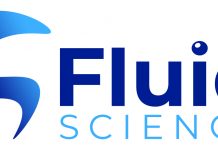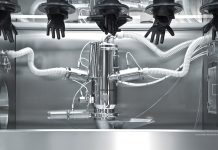Ammonia emissions in Europe have fallen since 1990, but by not as much as emissions of other air pollutants tracked under an internationally agreed United Nations convention.
According to a new report from the European Environment Agency, ammonia emissions increased in 2014, meaning several EU Member States as well as the EU now exceed their respective ammonia emission limits under the convention. Around 94% of ammonia (NH3) emissions in Europe stem from agriculture, mainly from manure storage, slurry spreading and the use of fertilisers containing nitrogen. Ammonia contributes to eutrophication — an oversupply of nitrogen — and acidification of ecosystems. It also forms particulate matter in the atmosphere which harms human health.
The Gothenburg Protocol to the UNECE Convention on Long-range Transboundary Air Pollution (LRTAP) contains emission reduction commitments that have to be met for nitrogen oxides (NOx), non-methane volatile organic compounds (NMVOCs), and sulphur oxides (SOx). The annual European Union emission inventory report 1990-2014 under the LRTAP Convention shows that NH3 emissions fell by 24% between 1990 and 2014, but increased in the EU‑28 between 2013 and 2014 by 0.9%. Ammonia emissions from the EU-15 in 2014 were 0.2% higher than the 2010 limit, the first time the EU-15 has exceeded its emission ceiling for this pollutant.
The rise in NH3 emissions in 2014 was mainly due to increases in France, Germany and Spain. Finland, Germany, the Netherlands and Spain also exceeded their individual NH3 ceilings in 2014. Emissions of the other main pollutants covered by LRTAP have dropped considerably since 1990, including the three air pollutants primarily responsible for the formation of ground-level ozone (O3). Carbon monoxide (CO), NMVOCs and NOx were reduced by 65%, 60% and 55%, respectively.
Key findings included:
Across the EU-28, SOx emissions have fallen the most with an 88% reduction since 1990. This is a result of a combination of measures including a shift from fuels with high sulphur content towards low-sulphur fuels such as natural gas, flue-gas desulphurisation in industrial facilities and EU directives relating to the sulphur content of certain liquid fuels. Emissions of primary particulate matter PM10 and PM2.5 have fallen by 23% and 25%, respectively since 2000, and black carbon (BC) by 42%.
Emissions of heavy metals such as lead (Pb), cadmium (Cd) and mercury (Hg), as well as the organic pollutants dioxins and furans, hexachlorobenzene (HCB), and polychlorinated biphenyls (PCBs) have also dropped substantially since 1990, by about 66 % or more. The EEA member countries Norway and Switzerland, also have emission ceilings specified under the Gothenburg Protocol. In 2014, Norway exceeded its NH3 ceiling. Switzerland complied with all its ceilings.
US toxic chemical emissions fall
The US Environmental Protection Agency has released its 2014 TRI (Toxics Release Inventory), which demonstrated once again the chemical industry’s commitment to protecting the environment. Total US releases of toxic chemicals decreased by 6% from 2013 to 2014, according to the EPA’s annual TRI report. The US chemical sector saw its emissions decrease by about 4% during the same period.
The EPA noted that the reduction was “mainly due to decreases from chemical manufacturing facilities and electric utilities.” New Jersey is among areas leading the efforts; its 367 reporting facilities realised a 1% reduction of Total TRI emissions on the previous year. Since 1988, total TRI emissions in New Jersey have reduced by 89%.
The chemical sector accounts for 32% of TRI emissions in New Jersey. The industrial processes, many of which operate 24 hours a day and seven days a week, have voluntarily implemented emission reduction measures that mean the sector was able to reduce emissions by 10% compared to 2013, and by more than 94% since 1988. The national average for the chemical industry is 83%.














